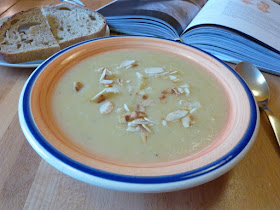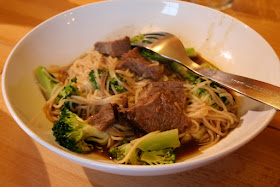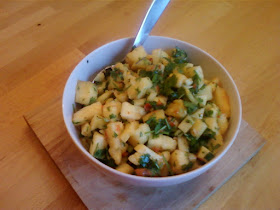This year Chanukah and Christmas have overlapped, so we have had our menorah and our advent candle burning at the same time. But why stop there? In the spirit of cultural fusion, I decided to fill some of my traditional Chanukah doughnuts with mincemeat to make a deep-fried Jewish alternative to mince pies. You could, of course, use jam or even just pop a square of dark chocolate into the middle.
Ingredients
for the dough
7g instant yeast
250ml warm milk
20g sugar
2 eggs
15g vegetable oil
500g plain flour
for the filling
mincemeat or jam or half a square of dark chocolate
for frying
vegetable oil
Method
- In a large bowl, mix the dough ingredients thoroughly, and knead briefly (still in the bowl) until you have a smooth dough.
- Cover the bowl and leave dough to rise for about 1 hour.
- Divide the dough into 12 balls, and flatten into discs.
- Place a teaspoon of mincemeat or jam in the centre of the disc, bring the edges up to form a ball, and press together to seal.
- Transfer to a well-floured tray and leave to rise for about 30 minutes.
- Heat plenty of oil in a deep fat fryer or large saucepan until it is medium hot (about 170oC), and fry the doughnuts in batches for 3 minutes, before turning them over and frying for a further minute.
- Drain, sprinkle with caster sugar and serve.
Kosher dilemma
My original plan had been to make jam doughnuts and mince pies, before I realised that the lard I use in my mince pie pastry with is made from pig fat and therefore not eligible for being served to my grandma. I did briefly consider going on a hunt for a kosher alternative before I hit upon the idea of combining the two in a sweet festive smorgasbord of Judeo-Christian cultural mestizaje. Needless to say, my grandma would have nothing to do with my carefully concocted mincemeat donuts, and insisted on jam.





































